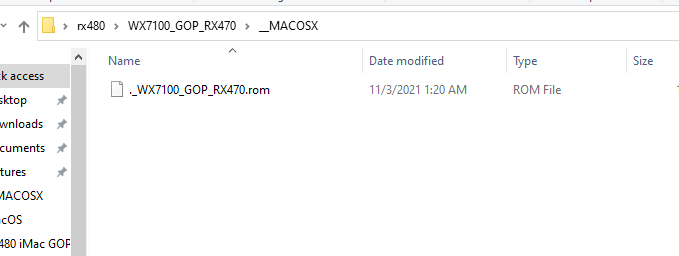** NVIDIA Quadro K610M Mac edition ROM **
View attachment 1726139
K610M:
The chip I used to develop the ROM is: N15M-Q2-B-A1
MXM-A (3.0) bus interface, low powered card at TDP 30W.
It is a drop-in fit for the 21.5" iMac and 27” iMac heatsinks.
It is based on the GK208 GPU Kepler 2.0 architecture.
Metal supported.
I put this together only because there are now a few members on here that have one and it is relatively cheap to purchase for the moment.
I have not had a chance to test it fully, but I can confirm brightness control will work with Opencore implementation on High Sierra 10.13.6. It is based on Nick[D]vb's ROMs, credits to him.
Bootpicker menu is also available ofcourse.
I've noticed that brightness is not set correctly when using the Opencore platform:
Code:
<key>DeviceProperties</key>
<dict>
<key>Add</key>
<dict>
<key>PciRoot(0x0)/Pci(0x1,0x0)/Pci(0x0,0x0)</key>
<dict>
<key>@0,backlight-control</key>
<data>AQAAAA==</data>
<key>@0,built-in</key>
<data>AQAAAA==</data>
</dict>
<key>PciRoot(0x0)/Pci(0x3,0x0)/Pci(0x0,0x0)</key>
<dict>
<key>@0,backlight-control</key>
<data>AQAAAA==</data>
<key>@0,built-in</key>
<data>AQAAAA==</data>
</dict>
</dict>
<key>Delete</key>
<dict/>
</dict>
The first <key>
PciRoot(0x0)/Pci(0x1,0x0)/Pci(0x0,0x0) is made up of the
Root PCI Bridge, the
1st PCI Device node and
2nd PCI Device node.
The second <key> entry is similarly encoded for the 2009/2010 machines.
Correlating this with the IO reg entry:
in 2011 models:
IOACPIPlane:/_SB/PCI0@0/POP2@10000/GFX0@0
in 2009/2010 models:
IOACPIPlane:/_SB/PCI0@0/POP2@30000/GFX0@0
I suggest the following changes:
delete the entire second key below for those of you with a 2011 machine:
Code:
<key>PciRoot(0x0)/Pci(0x3,0x0)/Pci(0x0,0x0)</key>
<dict>
<key>@0,backlight-control</key>
<data>AQAAAA==</data>
<key>@0,built-in</key>
<data>AQAAAA==</data>
</dict>
This cleared up the brightness issue for me.
Insanely Great!
-Steve Jobs
******
UPDATE
******
02/06/2021
-minor rom changes, improved speed, TDP: 1097Mhz, boost: 1202Mhz, Mem:1600Mhz
-working on Catalina 10.15.7 2011 iMac 21.5"
-working on Catalina 10.15.7 2009 iMac 27"
07/15/2020
- working on Catalina 10.15.3 2011 iMac 21.5"
- no internet recovery
- working on Catalina 10.15.X 2009 iMac 27" (Ausdauersportler)



